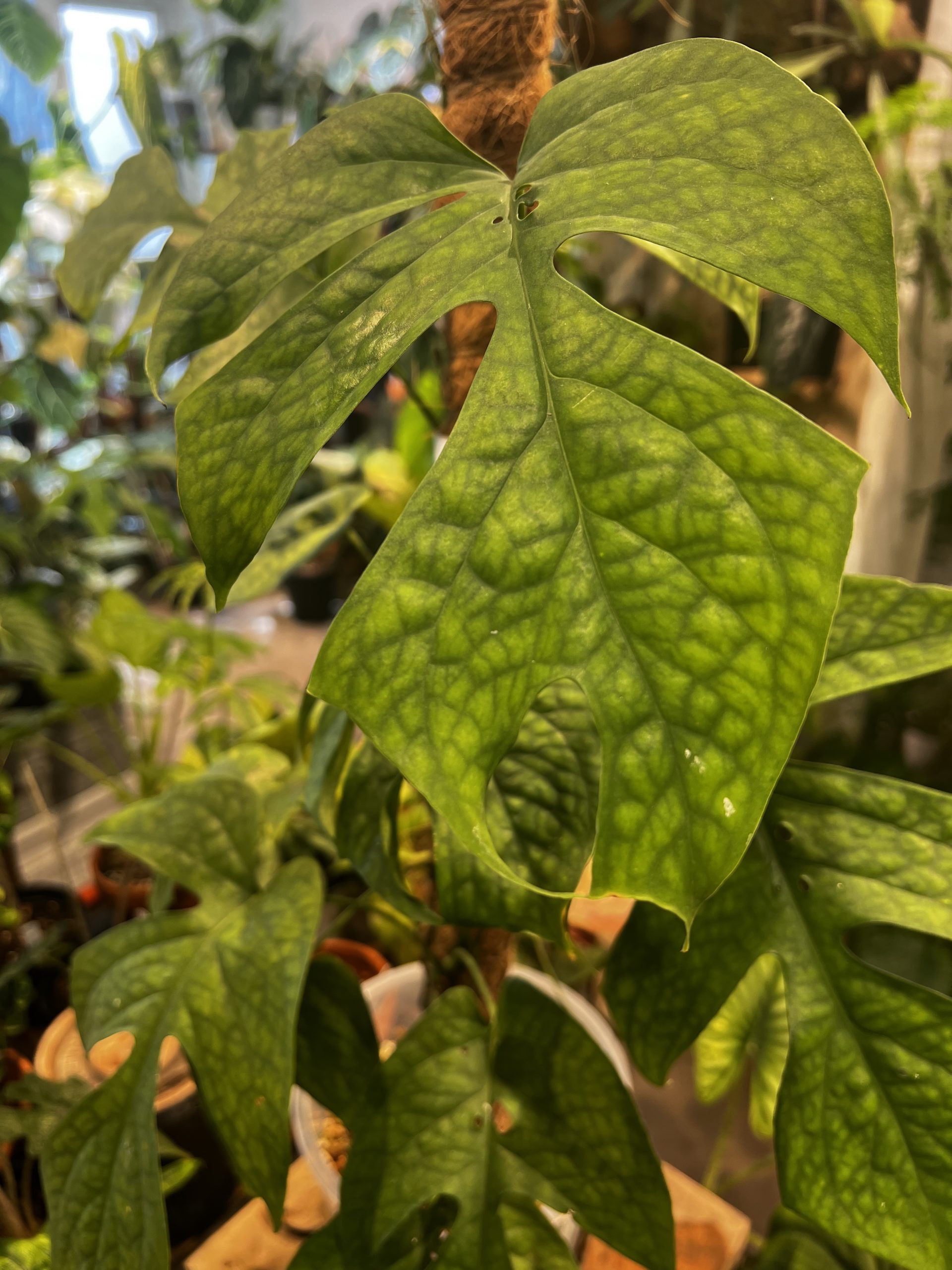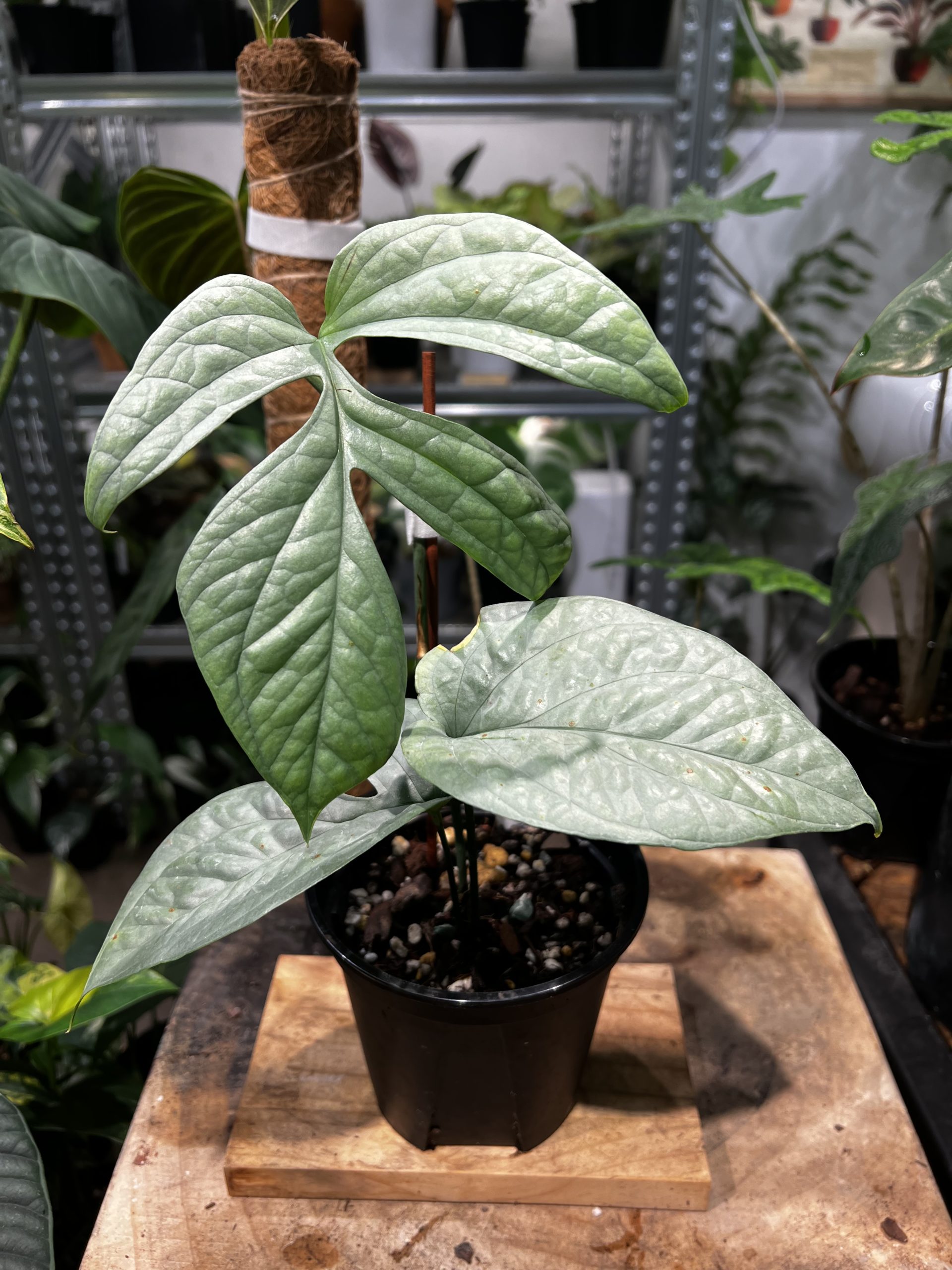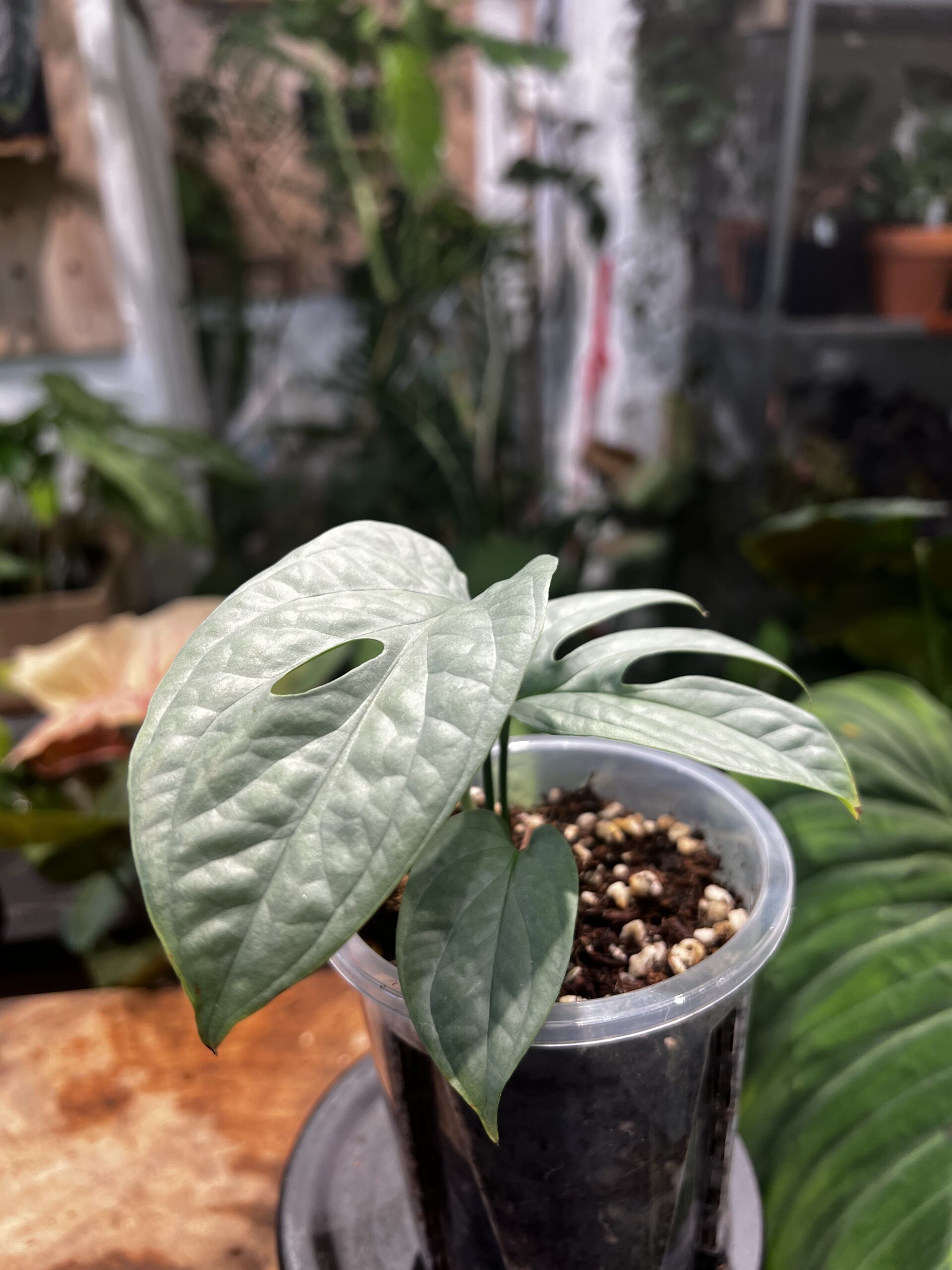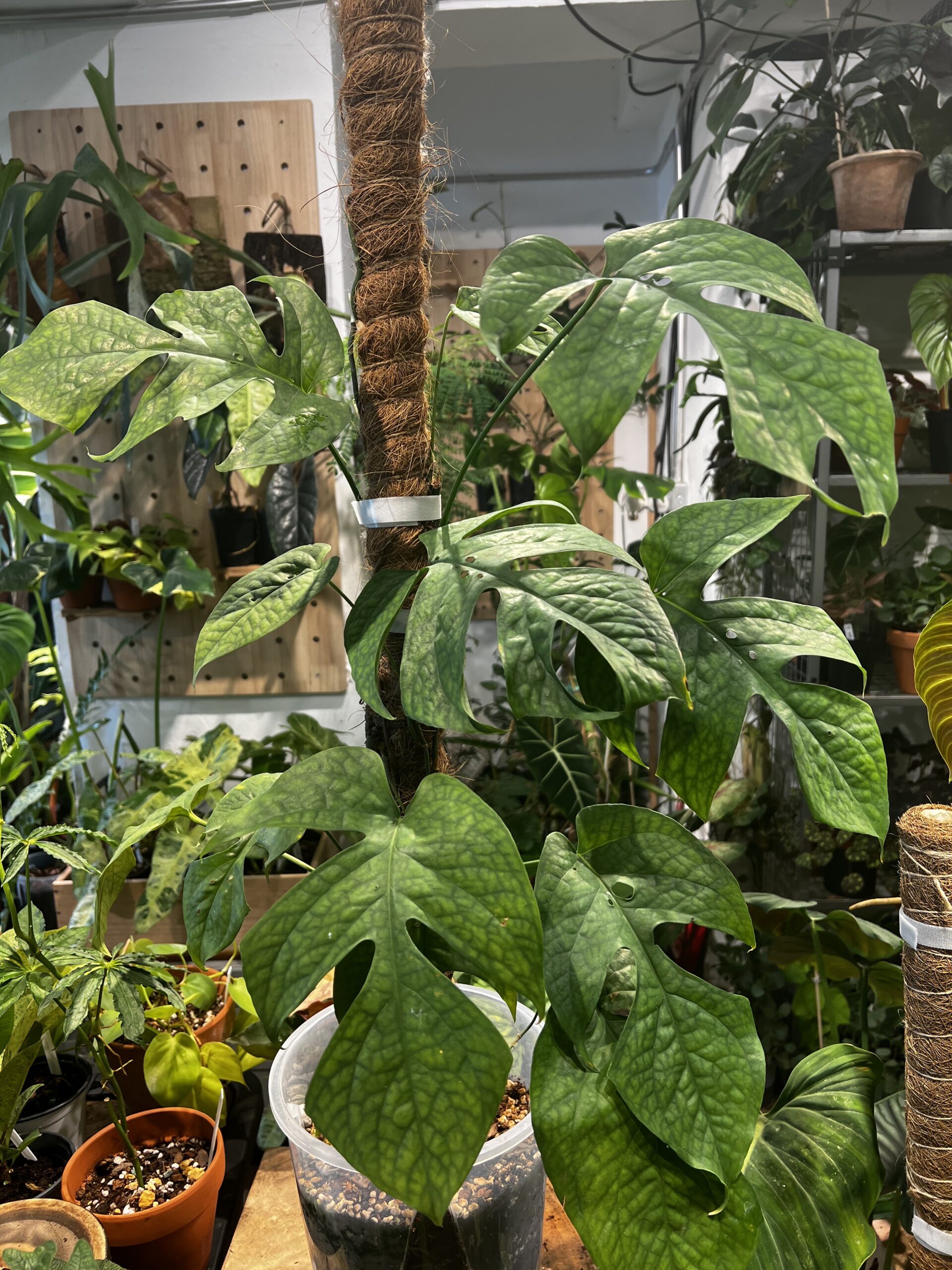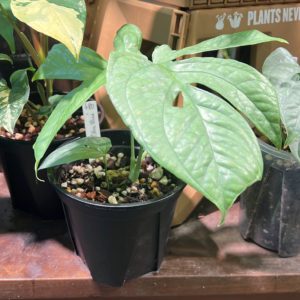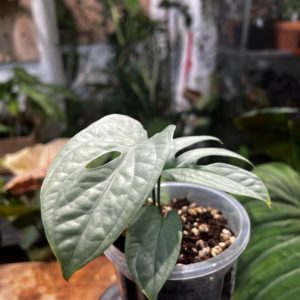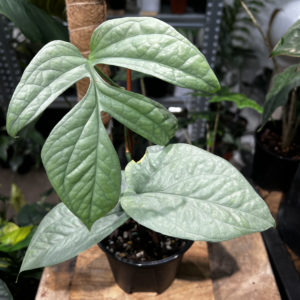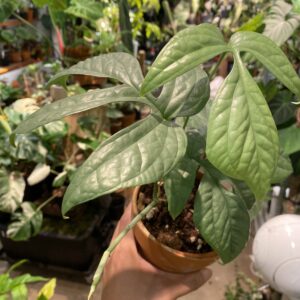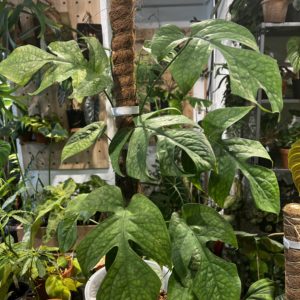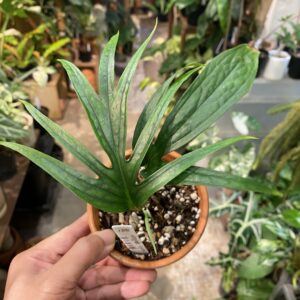When conserving Triptyphyllum plants, please note the following:
- Light: Plants are able to tolerate low-light environments, but grow better in plenty of bright light. Direct sunlight should be avoided.
- Watering: Water when the soil surface is 5 cm dry, avoid overwatering. Avoid leaving the soil completely dry, but don't soak it in water as this can lead to root rot. When the plant needs water, the leaves droop.
- Humidity: The humidity requirements are not high, medium humidity, the ideal value is 65-70%.
- Soil: Use well-drained soil and avoid over-wetting. Ideally, choose a well-drained, nutrient-rich soil mix. It is advisable to use high-grade taro soils that contain enough perlite.
- Toxic: The plant is toxic and unsafe for pets.
- Growth Mode: Likes to climb, it is recommended to provide moss pillars or other climbing brackets. Frequent repotting is not required, but repotting every 2-3 years can help ensure soil nutrients.
- Propagation: The authors have not yet attempted to propagate this plant, but it should theoretically be relatively easy to propagate using the climbing branches that grow.
- Common Issues/Pests: Similar to dragon's beard melon or other plants, yellow leaves may indicate overwatering. If exposed to too much direct sunlight, the leaves may fade. It can simulate the environment of native plants in the jungle, providing indirect moist light. Susceptible to mealybugs and red spider mites.

